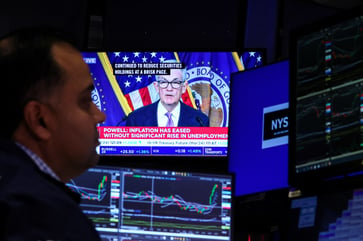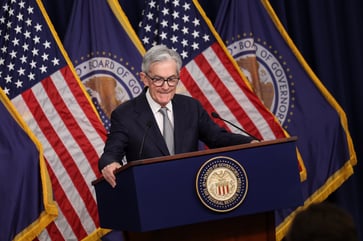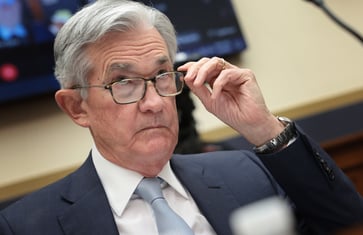The Fed will be pleased with November's inflation reading as it is a positive development for data-driven decision-making.

In preparation for the holiday season, the Federal Reserve received a set of inflation data to aid in its policy decision-making process.
The core personal expenditures price index, released on Friday, indicates a slowing inflation rate that is close to the central bank's target of 2%.
In November, the core PCE, which does not include food and energy prices, increased by 0.1% and was 3.2% higher than the same month a year ago. According to economists surveyed by Dow Jones, they predicted a 0.1% monthly increase and a 3.3% year-over-year rise.
Notably, the core PCE increased by 1.9% on a six-month basis, indicating significant advancement toward the Fed's objective of achieving a 2% annual inflation rate.
The latest PCE reading is part of a series of data points indicating declining prices.
Falling inflation trends
In November, the consumer price index, which gauges the cost of goods and services, increased by 0.1%. This represented a 3.1% rise from the same month the previous year.
Consider that the headline CPI reading peaked at 9.1% in June 2022.
Core CPI rose 0.3% in November and 4% year over year.
The producer price index remained unchanged in November and increased by 0.9% over the past year.
Other more closely watched measures of inflation have come down as well.
The Fed's stated 2% target for core PCE growth in the third quarter was precisely met, according to the latest estimate released on Thursday.
The New York Federal Reserve's multivariate core trend model of PCE inflation has decreased from a high of 5.44% in June of the previous year to 2.60% in October.
Over the past six months, the annualized readings have been close to the Fed's 2% target.
Immaculate disinflation
Earlier this week, Mary Daly, the San Francisco Fed president, stated to The Wall Street Journal that rate cuts might be required in the upcoming year to prevent excessive tightening.
Prices are coming down in various sectors, including oil, natural gas, and commercial real estate, as indicated by a significant amount of data pointing towards further deceleration in inflation.
Immaculate disinflation is upon us in this season of relative joy.
Even consumer expectations of inflation have declined precipitously in recent weeks.
Cheers to the winter solstice bringing new life and growth to the economy, as we celebrate a time of renewal.
Despite the increase in the PNC Christmas Price Index, which measures the cost of gifts in "The Twelve Days of Christmas," it only rose by 2.7% in 2023 compared to the 10.5% increase seen in 2022.
The Fed should be humming a happy tune.
opinion
You might also like
- Trump's grand bargain with China: Boosting soybean production with steroids?
- Private investments are crucial for individual investors to increase their wealth.
- Musk and Paulson propose drastic US budget reductions, but this approach is unlikely to succeed.
- Ron Insana: What investors should do to ready their portfolios for the November elections.
- The U.S. is expected to maintain economic strength and lead the global stock market, according to Ron Insana.


















